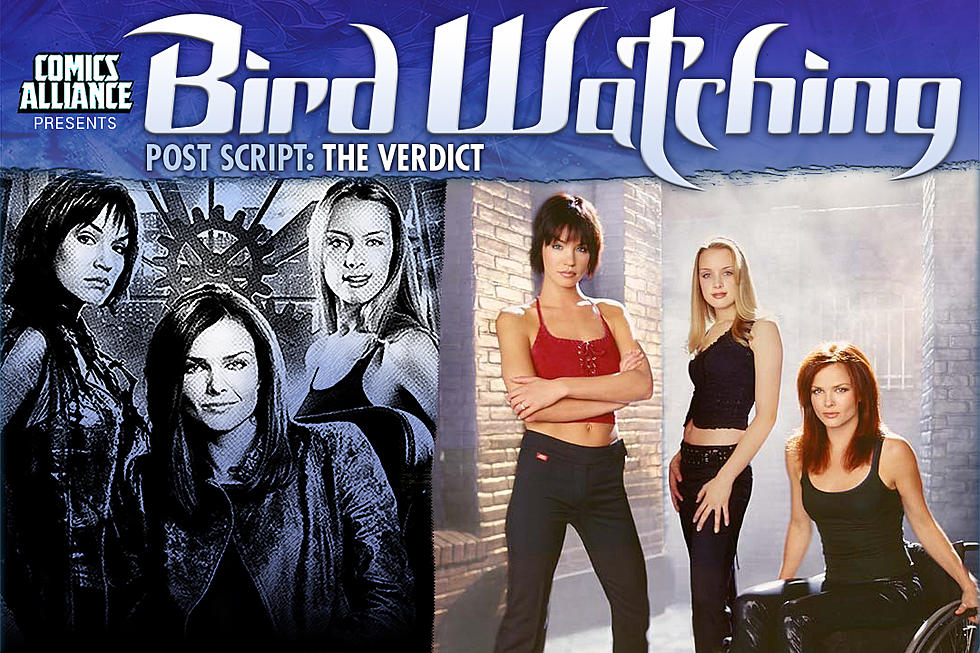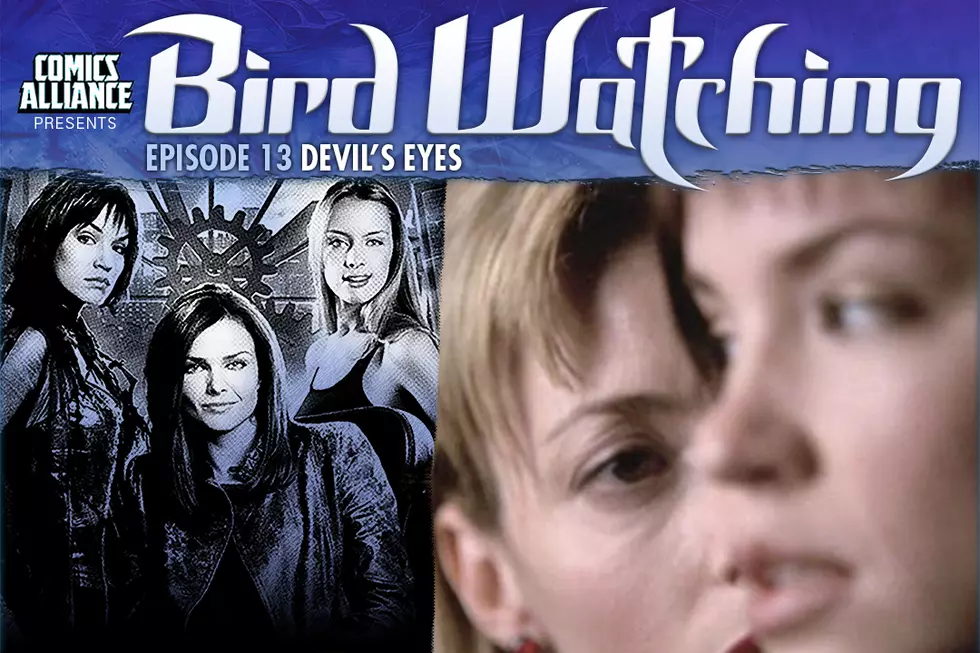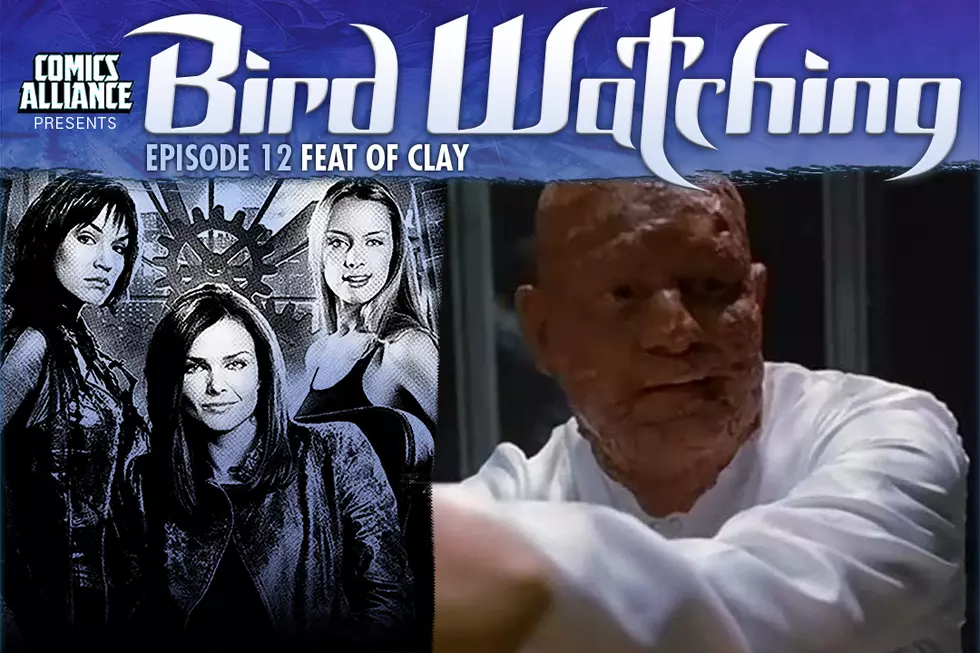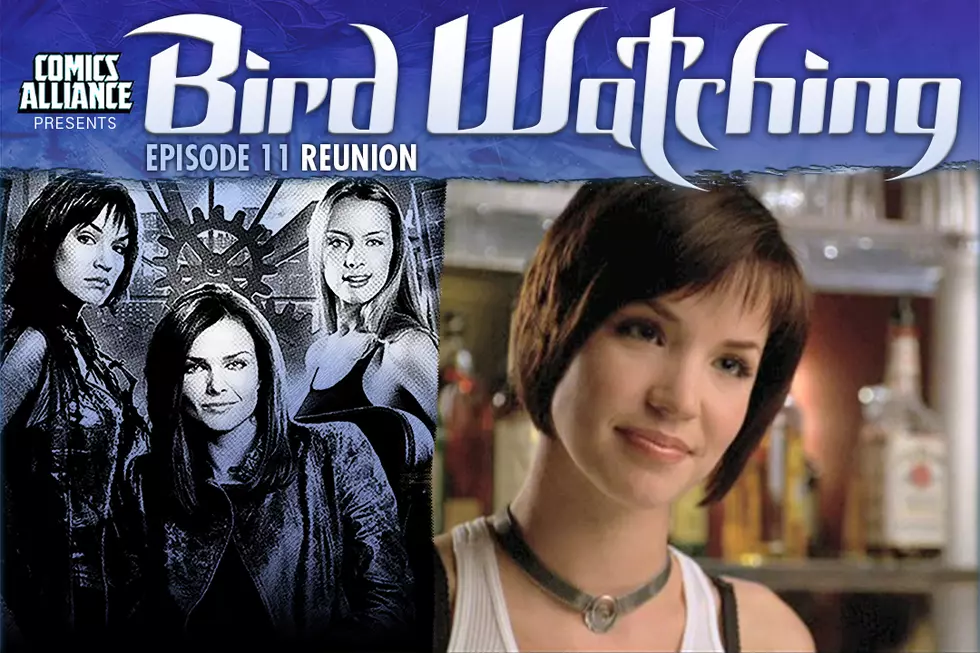
In the Comic Book World It’s Always an Attack of the Clones

On Wednesday Tiny Titans released a 'look-a-like' issue. In it, Zatara and Superboy switch clothing and become indistinguishable from each other. On the cover, the two characters look at each other and talk about how it's 'like looking in a mirror.' The rest of the Titans are crowded around, all looking equally confused, with Supergirl saying, "Why do they look the same?"
Good question. Comic books are often an exercise for the readers, who have to search out visual cues and character tags to figure out which character is which. Rather than recognizing characters, especially characters in a group, they have to put together hair color, body marks, and language to figure out who they're watching throw a punch. Why are so many superheroes pretty much clones of each other? Why do they look the same?These look-alikes are not a new phenomenon. Since the forties and fifties, heroes and heroines looked similar to each other. Superman may occasionally have worked the chin a little more than Batman did, but all the heroes had the barrel chest, the strong arms, the square jaws and the confident smiles. The heroines all had bodies like chaste pin-ups and heart-shaped faces with pointed chins and darkly-lined eyes.

Eerie sameness has been around for a while, but the problem has become more pronounced in the last few decades. Heroes have sidekicks, siblings and sons, all of whom grow up to look a little like each other. The comic book universe has become more extensive, and cross-overs have become more frequently and involved. Meanwhile, they all occupy a universe that has several different teams, multiple, year-long, universe-wide events, and the occasional holiday special. Throw in the fact that they change costumes, swap costumes, borrow costumes, and spend time together out of costume, and it becomes detective work to read a comic. They're mixed together like a salad and telling one leaf from another is hard.
At the same time, art has gotten much more sophisticated since those early books. Styles have become more varied, from broadly cartoonish to almost photo-realistic. Artists are competing in a tough market, and generally the ones who make it have really worked on their skills. Artwork has become far more detailed than it was in the past. And yet the same face phenomenon continues.
I understand there are technical challenges. It can't be easy to draw limitless variations of the human face on an area the size of a thumb print. Plus, many of the heroes are supposed to look the same. There used to be Batman and Robin. Now there's two Batmen and at least three versions of working Robins; all with black hair and blue eyes. When they get together they look like Russian nesting dolls. When they're apart it's impossible to tell which one is pictured unless someone on panel mentions their name.
But the solution doesn't just lie in sprinkling in a few brunettes and redheads. Look at the Birds of Prey. I love the book, but take any issue, since the first series, cut the faces off the bodies and see if its possible to tell who is who. For that matter, trace the bodies without including the uniforms and the only way anyone will be able to spot Oracle is the fact that she's generally sitting down. DC isn't the only one to have this problem. Put the X-Men, and women, in evening dress instead of uniform and try to tell them apart before the colorist gets to them. There's still a heroic build and a heroic face, and often it interferes with storytelling, a problem that has often been noted about the work of artist Greg Land.

Companies already have signifiers for different heroes. Tony Stark's beard, Nick Fury's eye patch, Bruce Wayne's scarred up chest, Power Girl's voluptuous body (the good artists don't just amp up the chest), or Wolverine's height all help identify them. But those are only a few of the heroes out there. For superhero art to really live up to its full potential, those different body signifiers need to be more widespread, and strictly applied. There are a lot of different bodies in the world, especially the world of athletics - which these heroes would be heavily influenced by. A dancer's body isn't a runner's body isn't a jockey's body isn't a boxer's body. Beyond that, some people are tall and broad-shouldered (men and women) while others are small and compact (men and women). Heroes can be the same way. It feels like a cliche to say there is beauty in all of these different bodies, but that doesn't make it untrue. It makes it more interesting than the cookie-cutter physiques seen in some books.
There should also be facial standards more widely applied. Superman can always rely on his chin, but Batman always struck me as more of a jowly kind of guy. Emma Frost could be a forties pin-up or in a back-up amazon in an eighties Robert Palmer video, but those two icons have different features. These features could be used to identify when it's Emma walking into a room, rather than some other Marvel blonde. There are drawbacks to the idea. Plenty of readers would be disappointed to see their favorite heroes coded as having one set of features when in their heads they see them as having others. At the end of the day, though, when art impinges on story, something needs to change.
(Last Note: Usually I'm comfortable addressing comics as a writer, not an artist, but today I feel the limitations of my practical experience. I am not a comics artist, and on this piece I would welcome the opinion of any people who are.)
What lookalikes have you noticed in comics?
More From ComicsAlliance

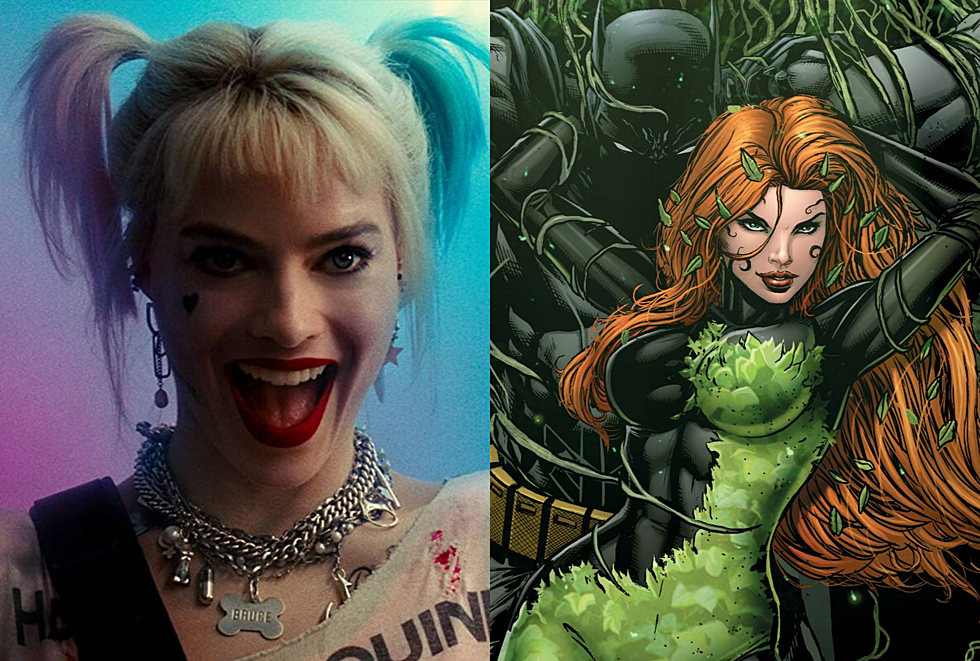

![MVP: Who Is The Greatest Birds Of Prey Member? [Poll]](http://townsquare.media/site/622/files/2017/02/BOP-Votes.png?w=980&q=75)
